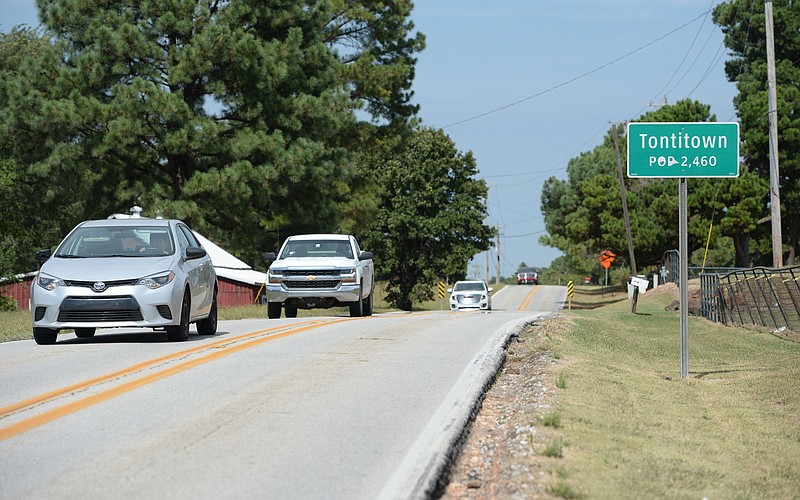SPRINGDALE -- Regional planners are looking at options to pay for a 12-foot side path along Arkansas 112 that would be built by the Arkansas Department of Transportation as part of overall widening and improvements to the highway.
Meeting as the Northwest Arkansas Regional Mobility Authority, planners approved a resolution to apply for a grant from the highway department's Transportation Alternatives Grant Program. That money is a sub-allocation of federal money the state receives.
They'd be asking for about $2.5 million over five phases of the project.
The resolution asks the highway department to pay a required 20% federal match for the side path through the Connecting Arkansas half-cent sales tax program.
Planners met as the regional mobility authority because neither the Northwest Arkansas Regional Planning Commission nor the highway department were eligible to apply.
Regional planners applied earlier for a $25 million federal grant to help pay for part of the Arkansas 112 improvement project.
The U.S. Department of Transportation has $1.5 billion available through its Rebuilding American Infrastructure with Sustainability and Equity (RAISE) discretionary grant program for 2023. The program helps communities around the country carry out projects with significant local or regional impact and that improve safety and equity.
If successful, the money would be passed along to the Arkansas Department of Transportation, which is responsible for the construction work on the project.
Plans call for the road to be moved in places and widened from two to four lanes, divided by a 15-foot raised median with four 11-foot lanes, more than 20 roundabouts and controlled access, a 5-foot sidewalk with a 3-foot greenspace on one side, and a 12-foot side path with a 6-foot greenspace on the other side.
The state typically doesn't pay for side paths, leaving local entities to find the money for that part of the project.
Elizabeth Bowen, senior planner at the Northwest Arkansas Regional Planning Commission, said if the RAISE grant is awarded, the state money would not be needed; otherwise, the state money could be used on the project, which is part of the planned Heritage Springs Trail.
Bowen said she doesn't have a recent estimate but thinks the side path portion of the project will ultimately require about $15 million to complete.
Making Arkansas 112 a major north/south connection in the coming years is part of the regional Transportation Improvement Program for Northwest Arkansas. Regional planners in January 2019 agreed to move forward with a vision for Arkansas 112 as a four-lane, north/south corridor with managed access.
The primary purpose of the Arkansas 112 widening is to allow the road to carry significant local and regional traffic, according to the planning documents. Arkansas 112 is the only major north/south route through the metro region west of Interstate 49, making it critical to regional mobility as the area grows.
Traffic plans approved
A Northwest Arkansas Regional Planning Commission committee approved plans Wednesday aimed at managing congestion and making roads safer for drivers, bicyclists and pedestrians.
The two plans, compiled by the consulting firm Cambridge Systematics, should make driving easier, safer and more efficient over the next 20 years, even as the population grows. The Fayetteville-Springdale-Rogers metro area population was 546,725 in the 2020 census and is expected to be around 1 million by 2045.
Transportation systems management and operations are strategies focused on operational improvements to maintain or restore the performance of the transportation system before extra capacity is needed. The strategies are often cheaper than adding capacity to roads.
Intelligent transportation systems are the application of electronic technologies and communications to increase the safety and efficiency of roads.
Together, the two initiatives touch on just about everything from traffic light technology to public transit and economics to demographics.
Source: NWA Democrat-Gazette

